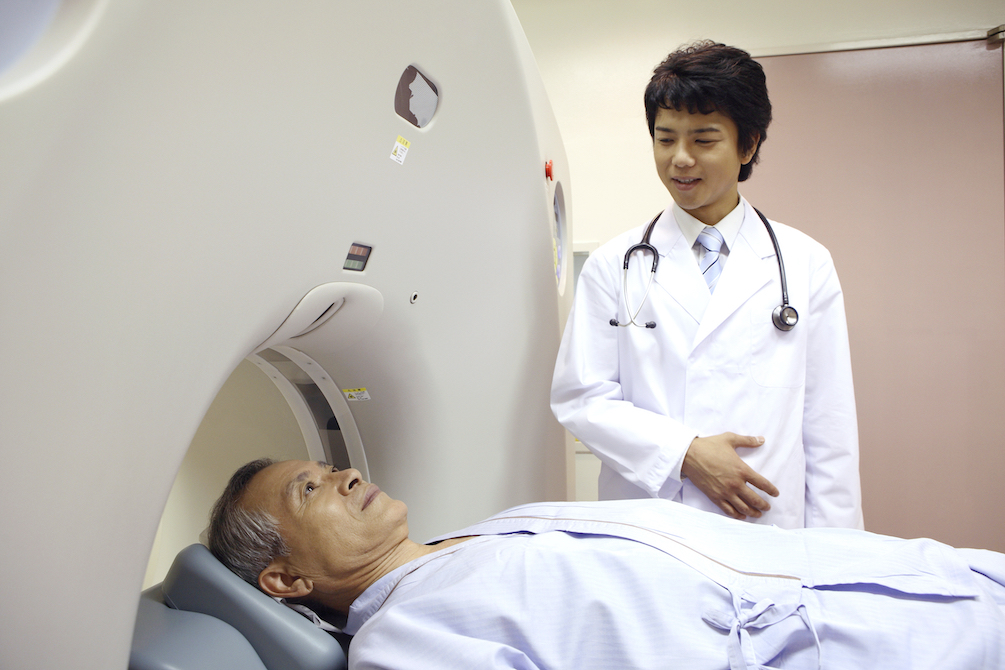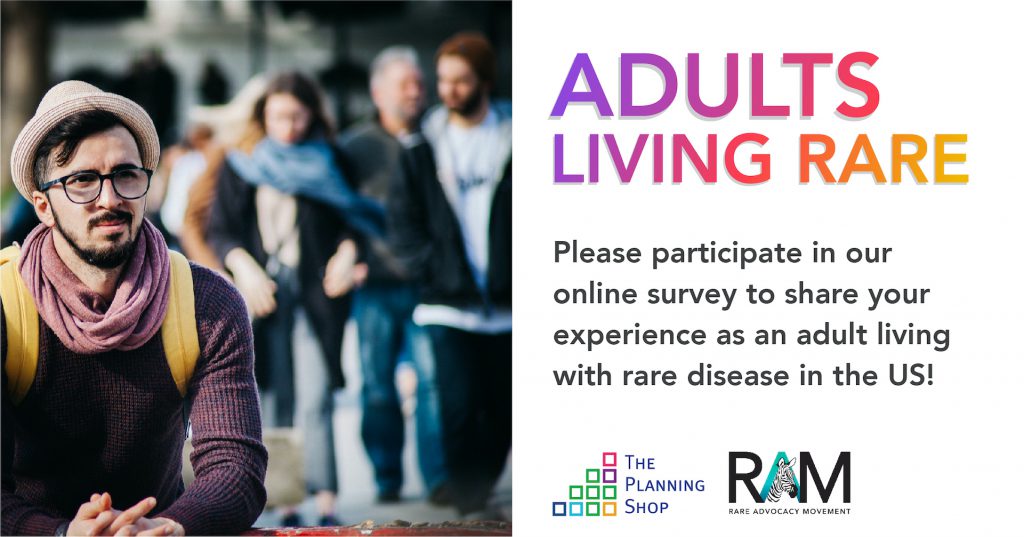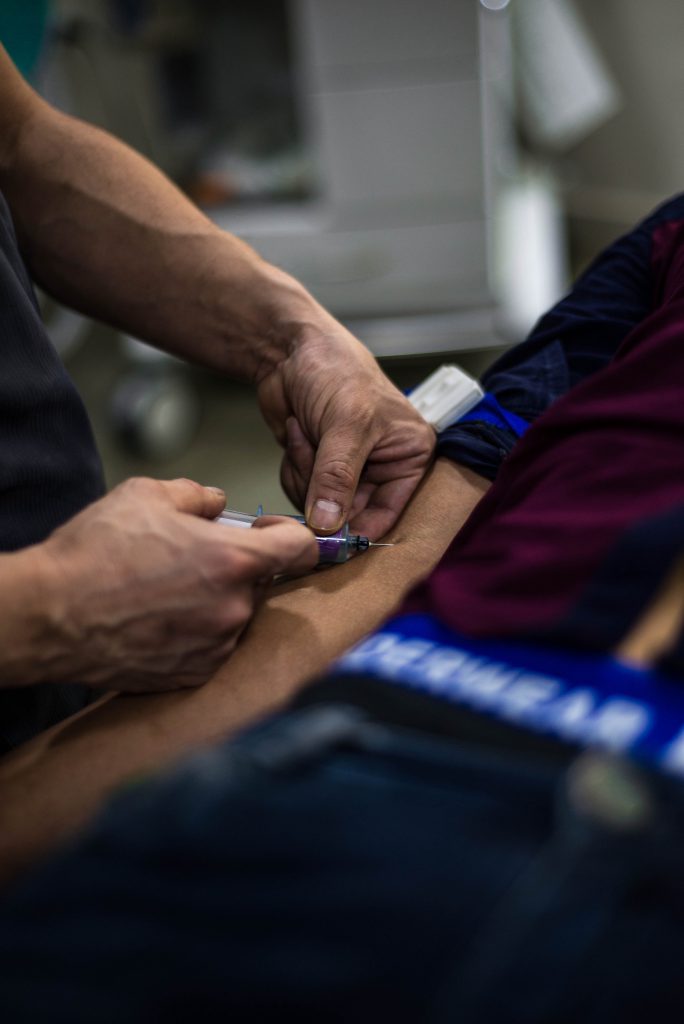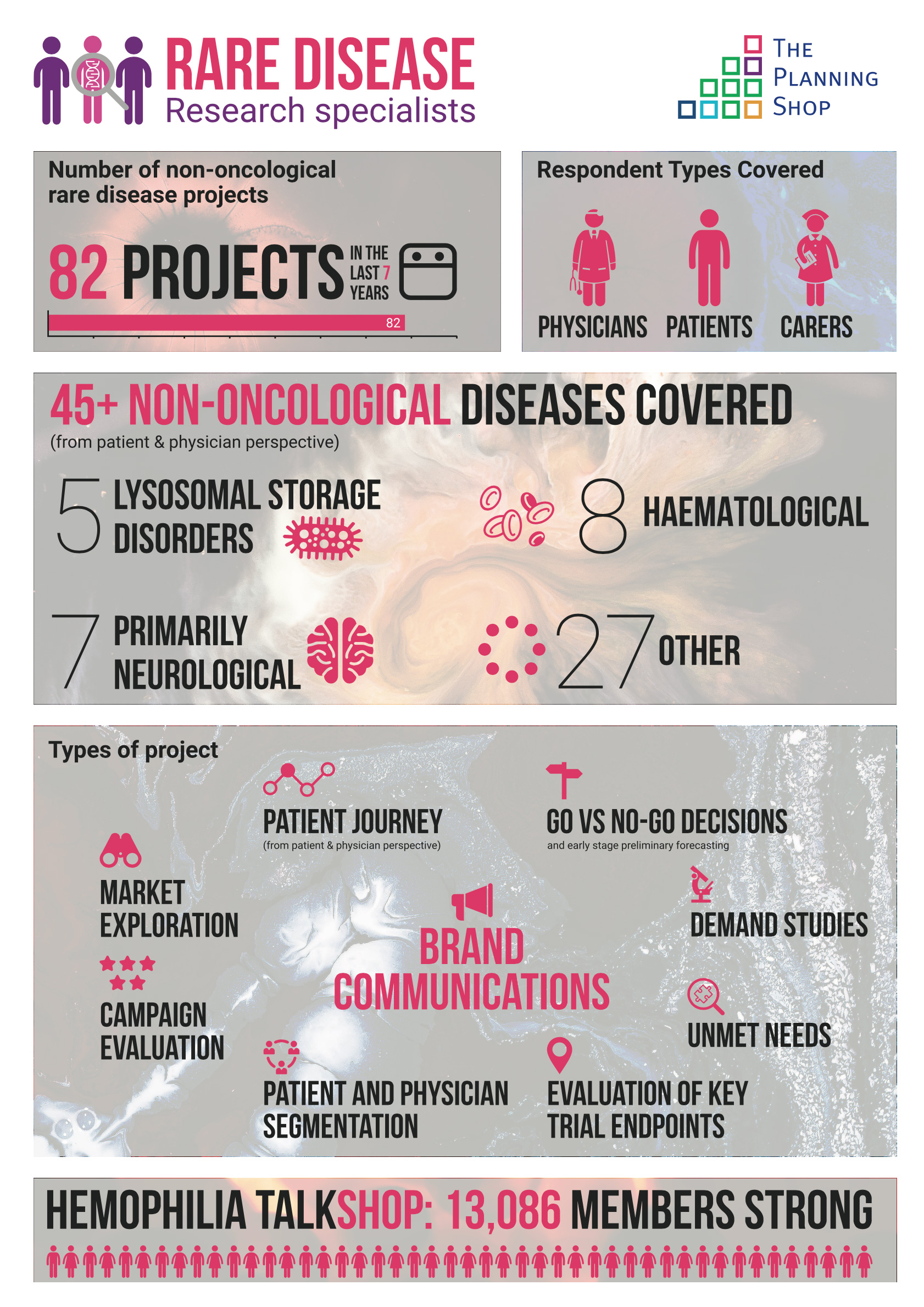By Phil Dunn
There are three guiding principles that should underlie successful market segmentation, and therefore the success of a pharma brand. Phil Dunn from The Planning Shop explains the process.
Segmentation research is a lot like the sky on the marsh where I live. It is big. It can take many shapes and colours. You need to experience it and know it well to appreciate its benefits.
Over 25 years as a market research expert I have found that there are three guiding principles that can make or break the success of segmentation, and therefore the success of a brand. Getting them right results in a compelling and valuable segmentation.
The alternative is an interesting, but bland, segmentation of little commercial use. After all, segmentation is an opportunity to look beyond what you think you know now and uncover insights that could give the brand the marketing advantage it deserves.
The three principles can be summed up by ‘ACE’: A for Ambition, C for Creativity, and E for Energy.

A for ambition
More than any other form of research, segmentation needs to start with specific goals. It is important to know from the outset why the brand needs segmentation and how segmentation is likely to be used.
This may seem straightforward, but often different parts of a business will answer these questions differently. Therefore, from the outset invite as much input as possible from as many potential advocates and detractors of segmentation on the ‘why’ and ‘how’ to kick-start a debate or workshop about what it should achieve and what it must avoid.
This will focus minds and shape the process, so that the brand team and the research that the business needs to complete will deliver against that ambition.
Research considerations during the ‘Ambition’ stage include:
- Understanding what form of segmentation is required (e.g. prescribing behaviour, attitudinal, psychographic or more fundamental – a priori or post hoc).
- Knowing who will use the segmentation analysis
- Understanding what they will they do with the analysis – i.e. pharmaceutical reps putting doctors into types using a typing tool
- Deciding what research exists that could jump start the process or negate the need for a first stage of qualitative research
- Clarifying the working hypotheses about how the expected segments are characterised
- Knowing what previous segmentations the client has seen. What worked and what didn’t work?
- Understanding if there are any trends, breakthroughs or competitor activity that need to be considered
- Determining the preferences and dislikes of the stakeholder audiences that need to be considered
- Knowing what country, or affiliate-based issues
to consider. It may be that one or more affiliates have already developed a
segmentation. These experiences need to be addressed for several reasons
including:
- There may be a segmentation model used by an affiliate that could be validated and adopted globally, saving a lot of time and money.
- There may be learnings about the research process or about the doctor population that could prove invaluable.
- There may be genuine concerns that a global segmentation may not be acceptable or that local nuances need to be given greater weight in the final segmentation than first thought.

C for creativity
Having agreed – and defined clearly – the ambition for segmentation, the next step is to inject as many forms of creativity as possible into the research, and the way it is rolled out to the business. Research methods can feel generic.
Agencies will talk about qualitative and quantitative research, but the creativity needed for pharmaceutical segmentation goes beyond method.
A useful analogy is this: it is accepted that if we need to travel to New York on business we will fly. Therefore, it is no longer normal to eulogise about the benefits of flight.
Airlines understand this, so it is unlikely you will see an advert that says ‘Wow, we can fly!’ Research is much the same; it is not the method, but what you do with it and what you find out that matters.
Creativity comes from the content of conversations with physicians or patients: how they reveal insights the business will find valuable; how these same insights inform the creation of segments and the outputs needed to communicate them.
Creative approaches to both the research and how it is delivered are available, but experienced guides who know these approaches will deliver the valuable insights.
However, creativity should not be limited to the research. Stakeholder involvement and the way the segmentation is rolled out to the business needs to be as engaging and creative as possible.
Agencies and client organisations need to ensure that segmentation does not become just another meeting, just another presentation, or just another research project.
It is too valuable to the success of brand to be routine. It is also too valuable to be made into an education in statistics.
Of course, whatever we do has to be grounded in solid and reliable information, but we mustn’t allow this to get in the way of the fundamental need for segmentation to be meaningful and engaging.

What motivations, hopes and fears may exist that could be exposed in the qualitative research?
Research considerations in the ‘Creativity’ stage can include:
- What qualitative techniques will explode the myths and create potential hierarchies or dimensions for the later stages? Often the best approach is to keep the qualitative research very broad. The tighter the focus – and the greater the imperative not to go over familiar ground to help get new news – the more likely you are to miss something of real value
- What motivations, hopes and fears may exist that could be exposed in the qualitative research?
- Think about bridging the gap between qualitative and quantitative research with transition meetings, gamification exercises and client engagement
- Build iterative processes into the design of materials – e.g. questionnaire flow, draft questionnaire, pilots and the final version
- Use an array of techniques in the qualitative research to unlock insights that go beyond rational explanations of behaviour to evoke emotional explanations
- Use stats primer meetings with the client to engage with the process
- Think about key segment driver selection
- Employ ‘difference analysis’ to make the segment differences stand out
- Run a client gamification workshop
- Outputs – these must be more than just bar and pie charts!
- Use storytelling to convey important segment differences
- Turn segment stories into a video montage
- Create segment dashboards
- Use posters, postcards, or walk the wall sessions at the final debrief to help embed the segments quickly
- Map in external data (for example, Rep data).

E for energy
It is not unusual for segmentation to take six months or longer (from discussions about the need to segment, to conducting the research and rolling the findings out to the business). Therefore, it is important to keep energy levels high and spread evenly across the whole process. When it comes to ‘Energy’, Segmentation can be divided into three blocks of tasks:
- Planning and set up
- Research
- Embedding.
Planning may take 1-3 months, research 3-6 months and embedding 1-3 months. However, the level of energy required over the three phases is likely to be similar. Often energy levels dip towards the end of segmentation (even though this is probably the most crucial time for the business to get to know, and plan, how to implement the segmentation). In order to inject energy into the process, add some fun into milestone meetings, by offering more light-hearted activities or inexpensive rewards to celebrate everyone’s commitment, for example.
ACE your next segmentation project ACE your next segmentation project by keeping in mind the three factors: Ambition, Creativity, Energy.
And, like the big sky on my marsh, to fully appreciate the nuances of segmentation, get yourself an experienced guide.
About the author

Phil Dunn is MD of the EU office at The Planning Shop, and heads up The QuantSHOP, a specialist quantitative research practice. His role encompasses innovation on new research approaches, working with clients on quantitative research studies and facilitating brainstorms and workshops for client specific projects. With more than 25 years’ experience of managing quantitative research Phil has a wealth of expertise in segmentation, conjoint and pricing as well as communications testing (such as message and concept testing).
Download the pdf version here.
Once a year, Ash – the American Society of Hematology – hosts its Annual Meeting, and 25,000 people attend. The Annual Meeting is a four day event pitched as “the world’s most comprehensive hematology event of the year [providing an] invaluable educational experience and the opportunity to review thousands of scientific abstracts highlighting updates in the hottest topics in hematology.”
This year’s event will be held in Orlando, Florida and Jeremy Smith and Colleen Lawlor from The Planning Shop will be there to learn about the latest updates in malignant and non-malignant hematology.
This year they are looking forward to the following:
- Special-Interest Session on Systems-Based Hematology: How to Implement Evidence-Based Programs for Virtual Hematology Consults and Anticoagulation Stewardship
- Special Education Sessions on ASH Clinical Practice Guidelines on Acute Myeloid Leukemia in Older Adults
- Special Education Sessions on ASH Clinical Practice Guidelines on Immune Thrombocytopenia
- Translation Research in Hematology Training (TRTH) 10-year Anniversary Symposium
- Combined Basic Science and Education Session on Cancer-Associated Thrombosis
- Special-Interest Session on Sickle Cell Disease Centers
If you’re attending, we hope to see you there!
By Rob Rawlinson, The Planning Shop
Something that always strikes me when visiting Japan is the uber-modern infrastructure and services enjoyed by residents and visitors alike. Upon touchdown at an orderly, almost peaceful, Japanese airport I feel like I’ve been transported 50+ years into the future. Japan has some of the fastest and most punctual trains in the world, the cleanest streets, and a penchant for high-tech solutions that work brilliantly. If you haven’t experienced a Japanese bathroom, you haven’t lived! However, healthcare is a very different story. It has only recently begun a new chapter as it embraces a passion for technology and modernity which already infuses many other aspects of Japanese life.
Japan, for a long time, was up to 15 years behind the USA in terms of novel cancer treatment. It was a market often not included in initial Global launches, even for brands developed domestically. In practice, they were often 5th+ to market.
However, change is in the air. Today, Japan is often seen as the second most important Global market, after the USA. Take Roche’s entrectinib for example. Japan’s Ministry of Health, Labor and Welfare (MHLW), approved the drug in June 2019 for the treatment of adult and paediatric patients with neurotrophic tyrosine receptor kinase (NTRK) fusion-positive, advanced recurrent solid tumors. This made Japan the first market to approve this tumor-agnostic brand which has the potential to target NTRK gene fusions found in a range of solid tumors including pancreatic, thyroid, salivary gland, breast, colorectal and lung. Meanwhile in the US and Europe it remains under Priority Review by the FDA and Priority Medicines designation by the EMA.
Healthcare start-ups are sprouting left and right, largely thanks to the Life Science Innovation Network Japan (LINK-J). LINK-J is a non-profit established in 2016 consisting of pharma industry, academia and government, based in the historic heart of Japan’s healthcare industry – Nihonbashi, Tokyo. LINK-J is devoted to pushing the boundaries of healthcare, incorporating high-tech solutions and playing a large role in Japan’s healthcare revolution.

But why such rapid change and who is in the driving seat?
Healthcare policy is set by the government and drug fees are set by a government appointed body, the Central Social Insurance Medical Council. It is generally accepted that ‘Abenomics’ – the economic policies advocated by Prime Minister Shinzo Abe – are helping to foster an environment ripe for start-ups and new business partnerships which, in turn, is stoking the fire of the healthcare revolution. To understand this rapid evolution of healthcare practice we need to understand the broader context on both a social and cultural level:
The shape of Japan’s population pyramid tells a social narrative that is drastically different to other markets. Japan has an ageing population with 30% over 65 years old. In 2017 life expectancy was the highest on record: 81 for men and 87 for women, according to Japan’s MHLW. It is also a shrinking population with an annual decline rather than growth. Immigration is limited and the birth rate is low. By 2060 Japan’s population is projected to be 87 million, down from 128 million today.
Japanese food culture is, traditionally, extremely healthy. Rice is the staple food followed in popularity by different types of noodles. A typical meal includes a bowl of rice, miso soup, pickled vegetables and fish. Meat is a relatively modern concept in Japan, following the lift on its ban during the Meiji Restoration in the 1870s. High vegetable portion, healthy noodles (soba), healthier desserts, smaller food portions, less red meat and plenty of fish are the key contributors to a healthy diet and are linked to Japan’s low incidence of heart disease and long life.
Japanese drug spend is a significant burden on the state. All residents of Japan are covered by either National Health Insurance (Kokumin Kenko Hoken) or employer funded insurance, both with varying levels of co-pay except for those on welfare who are 100% government covered. Bearing in mind Japanese demographics, the state will shoulder an increasingly large burden year-on-year as the population gets older, the pool of those paying taxes decreases, and more people need to be cared for. Moreover, as people get older they become increasingly susceptible to cancer and other conditions. This is due to factors such as the accumulation of genetic mutations, deterioration of immunity, and the degeneration of the thymus gland to little more than a sea of fatty cells and tissues. The shrinking of the thymus means only small pockets of T cells remain, therefore the body finds it harder to protect itself against infections, immune disorders and to seek and destroy dysfunctional cells which can lead to cancer.

Focusing on oncology, what role do treating physicians play?
When it comes to treaters, there is a loud contradiction. In market research we often hear very traditional views and prescribing habits, making Japanese physicians appear to be ‘laggards’ rather than the innovators or ‘future thinkers’ one would naturally assume of one living in Japanese society. Safety has historically been and still is today the prime driver in brand choice. Show a physician a product profile that has known and manageable adverse events or that is comparable or better vs. current standard of care and they are happy. Show the same physician a profile of a product that has a safety profile that has more complex potential side-effects and they struggle to see past this in assessing the wider benefit-risk profile. Therefore brands that offer a novel mode of action yet potentially a more complex toxicity profile can struggle to thrive in this atmosphere of resistance.
Typically a tumor is treated by the specialist concerned with the organ or tissue of origin e.g. a pulmonologist will treat lung cancer. Why does Japan treat in this manner? The practice has its roots in the development of Japanese medicine which focused on a system based on organ specificities. We can trace this back to the desire to find their own way of practice after the medical community’s initial exposure to Western medicine by the Dutch during its isolationist phase in the Edo period under the direction of the Tokugawa shogunate, between 1639 and 1853.
This is set to change. With Tokyo’s National Cancer Center, as well as the creation of Designated Cancer Care Hospitals, we are seeing a new breed of treaters in a new specialism – medical oncology. These medical oncologists, who treat a range of tumors, have the potential to challenge the risk-averse, safety-first, paradigm. Commonplace in other major markets such as the US, the specialist certification for medical oncologists only began in 2008. As of 2015 there were 1,060 physicians certified in medical oncology by the Japanese Board of Cancer Therapy – a Board created by the Japanese Society of Medical Oncology and the Japan Cancer Association.
Whilst it may feel a bit like a ‘riddle wrapped in a mystery, inside an enigma’ situation in the apparent conflict of Japan’s endless pursuit of modernity juxtaposed against traditional treater mindsets in an industry that tirelessly pursues innovation, perhaps there is an answer.
To bring positive disruption in a society that is pushing for change there needs to be a greater focus on the oncology specialism. The medical oncologists that do exist are playing a key role in helping expand provision of anti-cancer drugs.
Physicians in this role can place greater attention on oncology-specific matters, particularly as we learn more and more about diagnostics, prognostics and develop more targeted and selective therapies. They are the prescribers at the frontline of those using combined chemo and molecular-targeted regimens as well as involvement in clinical trials.

More medical oncologists should translate into a speedier and more optimal advancement of cancer care for Japan. With the explosion of molecular-targeted therapies, and the associated wider range of adverse events vs. traditional chemotherapy regimens, the role of medical oncologists is crucial. Ultimately, they can build all-important confidence in novel brands. This, in turn, will make more traditional treaters feel more comfortable and help spur on the Japanese healthcare revolution at the grass-roots physician prescriber level.

I look forward to the day I touch-down in Tokyo or Osaka and the picture of Japanese healthcare is truly aligned and reflective of the cultural and social experience I enjoy. I have no doubt that as a product of the Japanese healthcare revolution, the country will rapidly see cancer care that is cutting edge, at the forefront of Global innovation, and with consistently high levels of care offered to patients nationwide.
Download the full pdf article here.
What does the current rare disease landscape look like in the U.S. for adults? What are the challenges of living with a rare condition?
We are pleased to announce that in a joint collaboration with the Rare Advocacy Movement (RAM), an online survey has been created to uncover answers to these and other rare disease-related questions.

The survey will generate useful data which we’ll use alongside RAM to help inform public discussions about rare diseases and raise awareness of the challenges that adults living with rare conditions face on a daily basis. A summary of survey results will be published once the survey closes.
All adults in the U.S. age 18 or older who have been diagnosed with a rare disease or who are undiagnosed are invited to take part in the survey to share their thoughts and experiences. The survey is anonymous and only takes about 20 minutes to complete.
The survey has also been shared on TPS social media.
We’re pleased to announce that The Planning Shop has been shortlisted for two prestigious BOBI Awards!
The Awards – run by the BHBIA – recognise excellence across the business intelligence spectrum so it is a great achievement to be shortlisted.
Awards include: Best Use of Innovation, Best Customer Insight, Creative Fieldwork Team of the Year, Best Patient-Centric Approach, Analyst Team of the Year, and Analyst of the Year.
Along with some other finalists, we’ve been nominated for the ‘Best Business Impact’ award for a project we ran for Grunenthal.
Our team member – Rawaa Shami – has also been nominated for the Best Newcomer Award.
The final awards will be chosen at the Annual BHBIA Awards Ceremony in Windsor on 13 May 2019.
Keep your fingers crossed for us! We’ll share information about the winners after the event.
We’re pleased to announce that we have recently recruited some additional experts into The Planning Shop to join our growing team. Find out more about these experts below:
Leia Bagge (Research Executive)
Leia joined us in March 2019 as a Research Executive in our QuantSHOP division, having recently finished a MSc in Research Methods focusing on statistical modelling and Multivariate analysis. With a background in survey research, and an internship at IPSOS Mori working on large scale surveys under her belt, she has a strong interest in quantitative research design and online survey methods and enjoys working with and presenting data.
Shafali Ayra (Research Executive)
Shafali recently joined The Planning Shop as a Research Executive. She has a background in academic research, focusing on various topics in health psychology. Shafali has a great deal of experience interviewing patients with mental health difficulties, as well as patients engaged in various infertility treatments.
Niloo Brereton (Project Accountant)
Niloo joins us from a postal company where she was working as a Finance Analyst, having previously worked at companies such as Deloitte and Ernst & Young. Niloo’s key responsibilities at The Planning Shop will be to provide support to the FD and assist in the smooth running of the month-end; quarter-end and year-end cycles.
Lucas Daly (Associate Director, Patient Specialist)
Lucas joined us from Ipsos in late March as an Associate Director, Patient Specialist. His patient research experience was gained from a healthcare research charity based in Oxford, where he was Head of Patient Feedback. In this role he led an international team, running multi-market qualitative projects to deliver insight to clients to help them form competitive strategies.
Please join us in welcoming the newest members of our team!
Diane Glynn, Senior Research Director at The Planning Shop attended the World Vaccine Congress in Washington in 2019. She shares some insights from the event.
As stated by World Vaccines Conference Chair, Dr. Gregory Poland: “Some see vaccines as a virtual Pandora’s box, while we see them as hope.”
Anti-vaccine sentiment dates back to objections in the 18th century when inoculation was used to reduce smallpox morbidity and mortality. Most recently this has been exacerbated by Andrew Wakefield’s (since-retracted) paper linking the measles-mumps-rubella (MMR) vaccine to autism in 1998.
While progress is happening, and uptake is in the right direction, we haven’t significantly moved the ‘needle’ in more than 10 years.

Immunization has been the victim of its own success. We take it for granted and have become complacent – assuming programs will run themselves. However, it’s not finished business, nor is it likely ever to be. Plus, we’re consistently trying to reel-in our vaccine-hesitant population. So, what are we missing?
One piece of the puzzle is understanding the cultural underpinnings of our communities globally and reframing our presentation. Even in the United States, there is variation in beliefs that leads to hesitancy.
Just last month several communities were exceptionally affected by the measles outbreak as a result of vaccine refusal – among them the Orthodox Jewish community in New York, a Somali- American group in Minnesota, the Amish in Ohio, and Russian-language settlers in Washington. These communities tend to live near to each other, go to school together, worship together, and hold similar beliefs. They are not anti-vaxxers, but they may not necessarily hold mainstream beliefs either. While there has been significant investment in public health awareness, the messages have not reached some of these populations.
If we are going to achieve our vaccination goals, it must be an all-society initiative from federal partners, state and community health departments, cancer advocacy groups and immunization coalitions, to parenting groups and rural and faith-based community outreach. We need the ‘hard’ scientists to work with the behavioral scientists. We need to continue to invest in vaccine development, continue to raise awareness, and continue to communicate information in a way that can be received.
Read the pdf version here.

The best thing about recruiting the very top people as respondents for research projects is that, properly designed, your project can be completed very quickly, often within three weeks, and you’ll gain the most convincing opinions about healthcare faster than through approaching ‘conventional’ physician respondents. Stephen Godwin from THE PLANNING SHOP explains who KOLs are, how to find them, the types of research project they are suitable for, and how best to interview them.
First, let’s define these ‘top people’… often known as KOLs
The term ‘Key Opinion Leader’ (or International Thought Leader, or ‘KOL’ for short) means what it says, i.e. an expert who, through his or her activities – usually but not always research-based – influence and thus lead the field.
It follows that a healthcare KOL is an individual who is seeking to improve the lot of patients, and is, in effect, an agent of change.
It further follows that there are not many of them. Even in extraordinarily dynamic fields (like lung cancer), there are probably fewer than 100 KOLs worldwide. This is a very rarefied group.
What sort of research project is suitable for KOLs?
The main catch about KOL research is that it has
to be interesting. That is to say, the topic must first catch the KOL’s eye and, to succeed as a project, the questions must test them.
The first two KOL research rules are:
Real KOLs are very busy people; and
Real KOLs won’t do research for the money.
So, if you want KOLs to contribute to your research project, edit the interview objectives to suit them. Don’t ask them what you can read in a book or WIKI (they probably wrote it); ask them what your client really doesn’t know or understand and concentrate on elucidating responses to questions where the KOLs’ opinions will really help. For example:
How things will change in the future, and why; or
Their views on a client’s prospective TPP.
The third rule, supporting this point is:
The more clinically and/or scientifically challenging the questions, the better;
and its converse is the fourth rule:
Real KOLs can get very bored very easily – so avoid repetition.
The fifth rule is trickier: Know your subject.
No-one – well, no normal researcher – is going to understand a topic as well as the expert. However, when preparing to speak with an expert, the researcher needs to conduct thorough pre-interview research.
You have to be familiar, for example, with the condition you’re researching, and you need to know and understand the various treatment approaches.
This will help you interview experts effectively, to enable interactive, in-depth discussion.

KOLs are not difficult to find
International KOLs are not hard to identify… nor hard to attract, providing you adopt the right approach. The most obvious factor to bear in mind is that there are not many of them! In fact, in a project specifically designed for its purpose, we found less than 40 KOLs effectively ‘controlled’ the ongoing development in one important neurological field – controlling it via their domination of key roles on peer-reviewed key journal boards and on major international conference committees. It follows, if you try to recruit KOLs too broadly, you can risk diluting the best with the mediocre. (A salutary lesson: on one occasion a top French KOL learned – we don’t know how – that we had invited someone he evidently considered ‘junior’ to a research project, and promptly withdrew his participation!)
KOLs know a lot!
International studies of KOLs are, well, international! Few KOLs restrict their answers to their own country if tempted otherwise. Often, KOLs will, unprompted, answer in ‘global’ terms, commenting on what is relevant for the EMA or FDA, or both.
So, KOLs from USA and the ‘big 5’, then?
Many projects, especially projects that deal with addressing future change, will benefit enormously from the views from the top. By listening to what KOLs say and the way they say it, understanding what they think and why they think it, through intelligent, interesting and relevant discussion, will provide you with a true master-class on a simple or a complex therapy area – quickly.
KOLs are worth thinking about! If you can, use them in your research projects.
About the author

Stephen Godwin, Head of Key Opinion Leader Research
Stephen began his professional life as a post-doctoral, serotonin-receptor scientist, evolving through the pharma industry (with Merck and Lilly), UK retail and International Management Consulting into pure marketing research on the agency side. Following 11 years of general healthcare research as a TNS Healthcare Board Director, he joined Isis, (later Synovate) to develop and hone a speciality in international scientific opinion leader research – focused principally on assessing drugs early in the pipeline.
Download the pdf version here.
The Planning Shop is a supporter of Rare Disease Day 2019 which will take place on Thursday 28 February this year. To mark the occasion we will be hosting a baking competition at our UK office, and then selling the cakes to raise money for KIF1A.
KIF1A is a charitable organisation which connects families and supports research leading to treatment for people affected by the rare KIF1A Associated Neurological Disorder.
What is Rare Disease Day?
Rare Disease Day is an international event and its main objective is to raise awareness amongst the general public and decision-makers about rare diseases and their impact on patients’ lives. The campaign targets primarily the general public and also seeks to raise awareness amongst policy makers, public authorities, industry representatives, researchers, health professionals and anyone who has a genuine interest in rare diseases.
Why is it important?
Building awareness of rare diseases is so important because 1 in 20 people will live with a rare disease at some point in their life. Despite this, there is no cure for the majority of rare diseases and many go undiagnosed. Rare Disease Day improves knowledge amongst the general public of rare diseases while encouraging researchers and decision makers to address the needs of those living with rare diseases.
Find out more about Rare Disease Day 2019 here. Discover how you can also support the cause to raise awareness.
Find out more about our Rare Disease Group at The Planning Shop.


